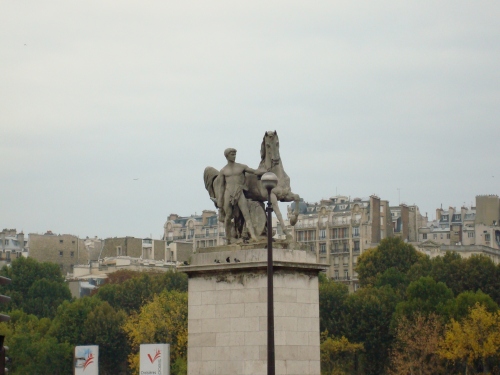Have you heard about the scandal over the new Publisher’s Weekley Top 10 Books List? No? You mean you’ve been more distracted by debates over healthcare insurance or the economy or Afghanistan to notice a minor hullabaloo in the fringes of the publishing world?
Well, me too, actually. (Don’t get me started on insurance. French or American. I’m in a bad mental place with insurance models right now.)
But, trustily, the New York Times ArtsBeat blog alerted me to this fact: the Publisher’s Weekly Top 10 List this year had no women authors on it. Zero. Now, I can’t say that I’ve read many books that came out in the past year (certainly haven’t gotten to any of the ones on the PW list – and if anyone out there has read “A Fiery Peace in a Cold War: Bernard Schriever and the Ultimate Weapon,” of course let me know if it’s a must read), I can’t imagine that none of them were as good as the 10 listed here. And I’m not alone – the Pulizter Prizes for Fiction and History in 2009 went to women. The NY Times piece mentions that there has been, and may continue to be, a bias amongst publishers against women writers. The editor of reviews at Publisher’s Weekly (a woman, by the way) said that they were “disturbed” when they discovered that their list – which they had compiled from their own opinions and reviews- was all male.
Depite what this is sounding like, I actually don’t think there should be affirmative action on these kinds of lists. If you think those are the 10 best books of the year then fine, but what does that say about female writers? Are they not writing in the hopes of pleasing snooty reviewers at Publisher’s Weekley? Do more of them write what they think readers want (or what they themselves might like to read), and so head for genre fiction and other kinds of books? Or is there some kind of deep bias against women’s writing or women writers that still exists from before the time when Jane Austen was considered an anomaly for writing about the kinds of people she saw and lived with everyday? I think it’s probably some of all of these things, and many more factors that I can’t even think of. It’s an interesting phenomenon, at the very least.
This is all by way of saying, by the way, that I’ve signed up to write a 50,000 word novel in November. Yeah. I know. It’s through the National Novel Writing Month organization (NaNoWriMo, for those who like annoying acronyms), whose advice is “quantity, not quality.” Seriously, it’s all about getting people to write, and understand that a first draft is supposed to suck a bit (or, it can even suck a lot), but the goal is to get a first draft of something, even if you erase every trace of its crappiness on December 1. So, I joined in on the madness, because what else is a girl supposed to do while living in Paris and learning French? Write a novel, of course.
 I may be needing a lot of this in the next few weeks…
I may be needing a lot of this in the next few weeks…

